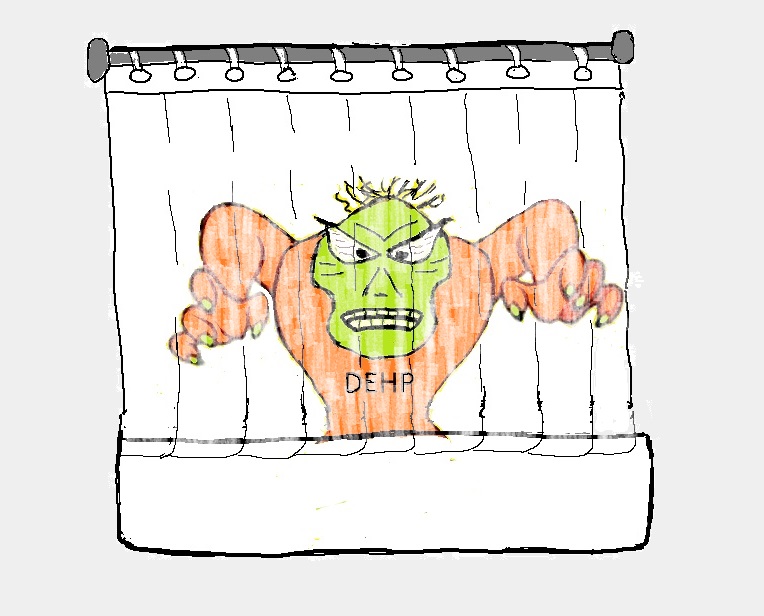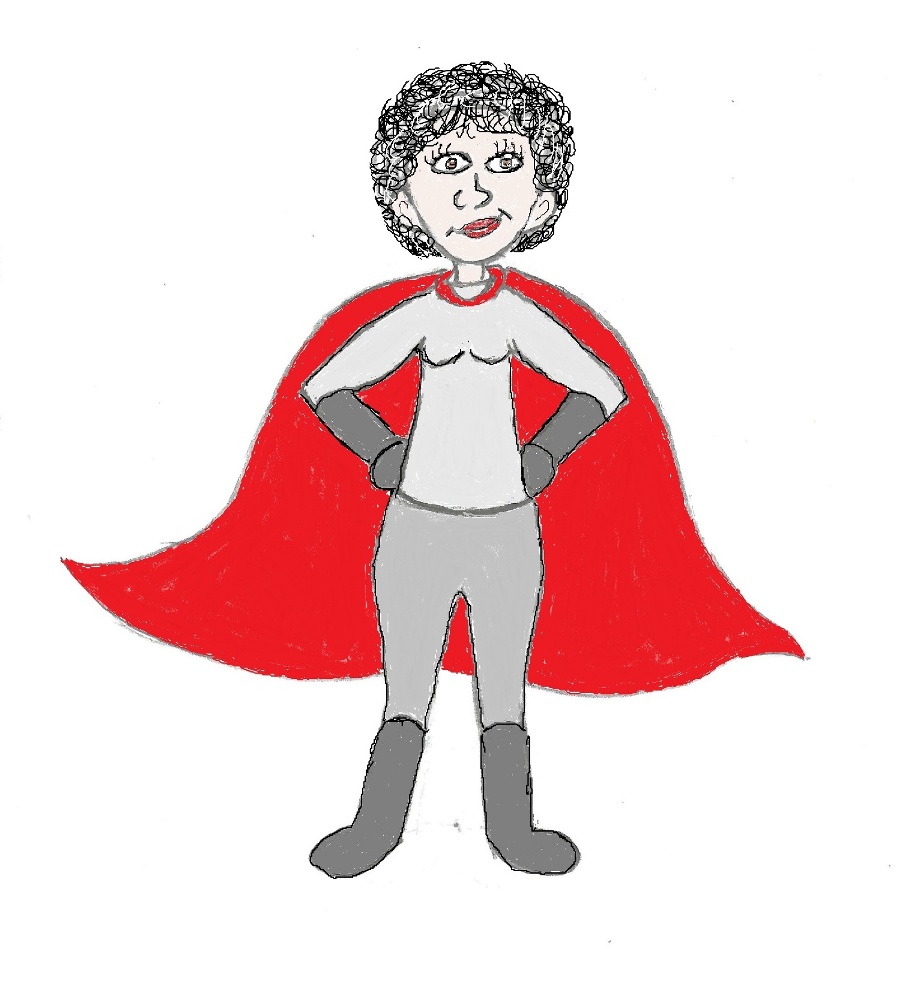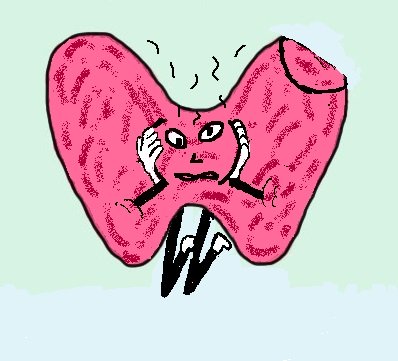- Home
- Toxic Chemicals & Health
- Phthalates
Phthalates Part I
Fourteen Things You Need To Know
Phthalates. Seems like they’re in everything and in every body, including yours. They are found in indoor air, house dust, food, and drinking water. And exposure to these chemicals can mess with your hormones and cause inflammation.
In Part I of this post I cover some things you need to know about these toxic chemicals. In Part II I cover some surprising sources of phthalate exposure.
1. What They Are
So what exactly are Phthalates? Well, in chemical speak they are synthetic esters of phallic acid. These chemicals are also called plasticizers because they are added to plastics to make them more pliable.
And they are also used as solvents–in other words things dissolve in it (solute) to make a solution-in many consumer products. (An example of a solution is salt water. Water is the solvent and salt is the solute.)
2. There Are Many Different Kinds
There are about a dozen different types of phthalate compounds commonly used. This is important because different types are used in different products, enter your body in different ways and have different health effects.
The most common phthalates can be loosely grouped into
- Lower molecular weight - (dimethyl phthalate [DMP], diethyl phthalate [DEP], and dibutyl phthalate [DBP])
- Higher molecular weight - (diethyl hexyl phthalate [DEHP], diisononyl phthalate [DINP], diisodecyl phthalate [DIDP], and benzyl butyl phthalate [BBP]).
(molecular weight is basically the mass of a molecule, based on the sum of the atomic weights of the atoms in a molecule).
3. Phthalates Are Quickly Broken Down In Your Body BUT…
Most phthalates have a half-life of 24-48 hours. That means that your body breaks down and excretes half the amount you’re exposed to within a day or two. (Studies that measure the amount of these chemicals in urine look for the breakdown products, called metabolites).
That doesn’t sound so bad, does it? BUT – over the past decade many studies have measured the levels of these chemicals in our bodies. And found that at least 75% of us carry around a toxic load of phthalates.
They’ve been detected in urine, blood and breast milk. And because they dissolve in body fat (lipid soluble) they’ve also been detected in body fat.
4. You’re Constantly Exposed
So why, if your body breaks down and excretes phthalates and their metabolites so quickly, are they almost always detected in us? The logical answer is that you and I are constantly exposed. And there are several reasons why.
First, these chemicals are used in a lot of different types of products. And second, because they aren't chemically bonded to the products they're in, they're easily released from products by leaching, migration, evaporation or as the products break down. And third, they are semi-volatile organic compounds.
Also, because they are lipid soluble, phthalates that have accumulated in fat tissue can be released to other parts of your body, contributing to the levels found in urine.
Constant exposure means your detox system is constantly working to rid your body of them. Plus any other toxins you've been exposed to. This can overwhelm your detox system
And an overwhelmed detox system works less efficiently. It doesn't completely breakdown and excrete some toxins and their metabolites. Many end up stored in your body fat. For more info on how your body handles toxins check out Body Burden and How To Detox Your Body Part I.
5. They Are SOVs
SOV stands for Semivolatile Organic Compounds. SOVs like phthalates belong to a large group of carbon-based chemicals that easily evaporate at room temperature, called Volatile Organic Compounds (VOCs)
While VOCs mostly exist in the vapor phase in the air, semivolatile organic compounds (SVOCs) can exist in both vapor and condensed phase. This means they evaporate from products as a gas but can then condense back to a liquid.
This means that while high levels of VOCs are often reported in indoor air, high levels of SVOCs can be found in indoor air and house dust. To complicate matters, SOVS, like phthalates can be absorbed into things like furniture and clothes.
Because they’re in your indoor air, house dust and on many surfaces in your home you can inhale, ingest and absorb these toxins through your skin.
6. You Inhale Them
Phthalates are SOVs that are easily released into your homes air. And lots and lots of products contain these toxic chemicals.
Studies that measure the toxins in indoor air consistently report high levels of phthalates in the air. In fact, air concentrations of phthalates are approximately 10 times higher indoors than outdoors..
And, you spend 80%-90% of your day indoors.
Add that all up and it’s easy to see why breathing your homes air is a big source of exposure to this endocrine disruptor. Especially the lower weight phthalates like DEP, DBP and DnBP.
7. They Make Dust Bunnies
Here’s the thing about chemicals that are SOVs. They are released from products as a gas, so you inhale them.
But once released as a gas they can condense into liquid form and attach to the dust in your house. Once that happens you can inhale or accidently ingest the dust.
In 2014 researchers collected house dust and indoor air samples in 49 California homes and analyzed them for SVOCs like phthalates. All 11 target phthalates were detected in house dust samples. And most phthalates were detected in more than 90% of the dust samples.
DEHP, BBP, and DBP were detected at the highest concentrations. Other types commonly found in house dust include BBzP, DnBP, DIBP, and DEP.
8. You Ingest Them
The food you eat is considered a major source of phthalate exposure, especially DEHP and DINP. These toxic chemicals have been found in a lot of different foods, including bottled water, meat, seafood, beverages, grains, and vegetables, with particularly high levels reported in fatty foods.
So how did they get in your food? Well, think about all the plastic parts used in the machinery that processes food. And what about all the food you buy that’s wrapped in plastic or comes in plastic containers.
Phthalates migrate through these things into your food. A 2016 study on phthalates in fast food found that eating fast food may be a source of exposure to DEHP and DiNP.
9. You Absorb Them Through Your Skin
Low molecular weight phthalates like DBP and DEP can be absorbed through your skin. And these are the types of phthalates used in personal care products, the same products you put on your skin!
Plus, many of these products have chemicals in them that make it easier for you skin to absorb things. In other words, The skin absorption enhancing chemicals in personal care products can increase your exposure.
And direct skin contact may not be the only way you absorb these toxins. A 2015 study found that the phthalates in indoor air may also pass through your skin. Yikes!
Now listen up you older folks. As you age, your epidermal layer is thinner (more compact) than when you were younger. It also has less lipids. These changes may make it even easier for toxins to be absorbed into your skin.
In fact, one study found that skin absorption of both DEP and DnBP was greater for older participants than for younger participants.
10. Your House Absorbs Them
Okay, so you now know that phthalates are released as a gas, but can return to liquid form and attach to dust. Guess what else they can attach to? That’s right, many surfaces in your house.
Things like furniture, curtains, carpet, wall paper and even the clothing hanging in your closet can absorb them. In fact, your clothes can absorb high concentrations of contaminants. When you wear them, these toxins can be absorbed through your skin.
And, these same surfaces can release these toxic chemicals back into the air. This provides a constant source that you can inhale.
11. They Are Endocrine Disruptors
Your endocrine system is a network of glands (thyroid gland, ovaries, etc.) that are distributed throughout your body and the hormones (insulin, estrogen, etc.) they produce. Hormones are used to communicate with cells and tissues to regulate many functions in your body.
Endocrine disrupting chemicals like phthalates mess with this communication system. They push around and bully your body's natural hormones. They block them from going where they need to go and mimic your body’s natural hormones. This means your endocrine system can’t do its job.
Because of this disruption, phthalate exposure is linked to insulin resistance, obesity and thyroid disease. Exposure during pregnancy and in young children may result in abnormal development of reproductive organs.
12. They Cause Body Inflammation
Although phthalates are best known for their action as endocrine disruptors, The levels of phthalates that you're exposed to may cause oxidative stress by creating free radicals and/or impairing antioxidant defenses.
Your body has an antioxidant defense system designed to battle free radicals. Oxidative stress occurs when your body produces more free radicals than it can handle.
And, oxidative stress zips you down the slippery slope to body inflammation. Constant exposure to toxins like phthalates may lead to long-term or chronic inflammation.
That is is not a good thing and is thought to cause many health problems and diseases. These include diabetes, heart disease, Alzheimers and Parkinson's Disease.
13. They Are Allergens and Asthmagens
It’s really easy to inhale phthalates because your indoor air usually contains high levels of them. And these toxins can create inflammation in your body, including your lungs.
So, it’s probably no surprise that In the last decade, several studies have linked exposure to these toxins with wheeze, allergies, and asthma among children and adults.
Researchers believe it's the high-molecular-weight phthalates, DEHP, DINP, DIDP, BBP, in indoor air that are the culprits. DEHP and BBP are also found
in high concentrations in house dust, which you can also inhale.
14. They Are Hidden In Surprising Places
Phthalates don’t show up on any ingredient lists, but they are in a lot of different products. You would expect to find them in plastic products. But did you know they are also in things like perfume and insecticide?
In Part II I cover some common and some surprising sources of exposure to these dangerous toxins.
Other Posts You May Like
 How To Detox Your Body Part II How To Detox Your Body Part II | |||





